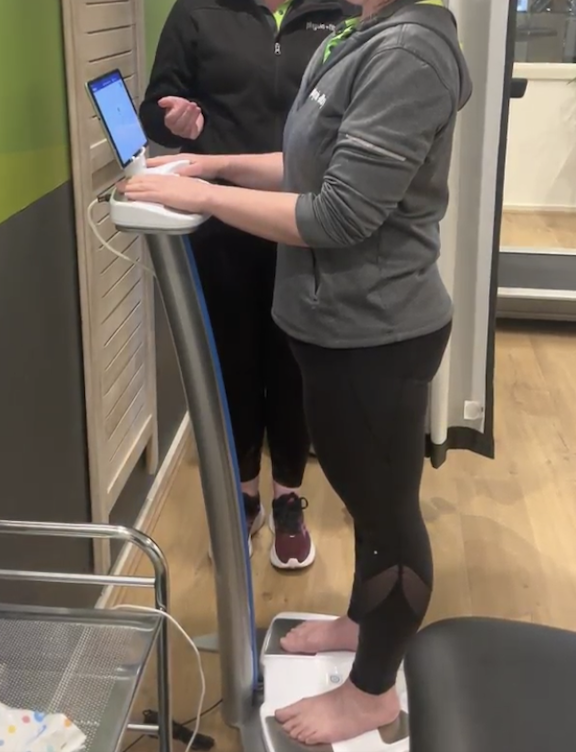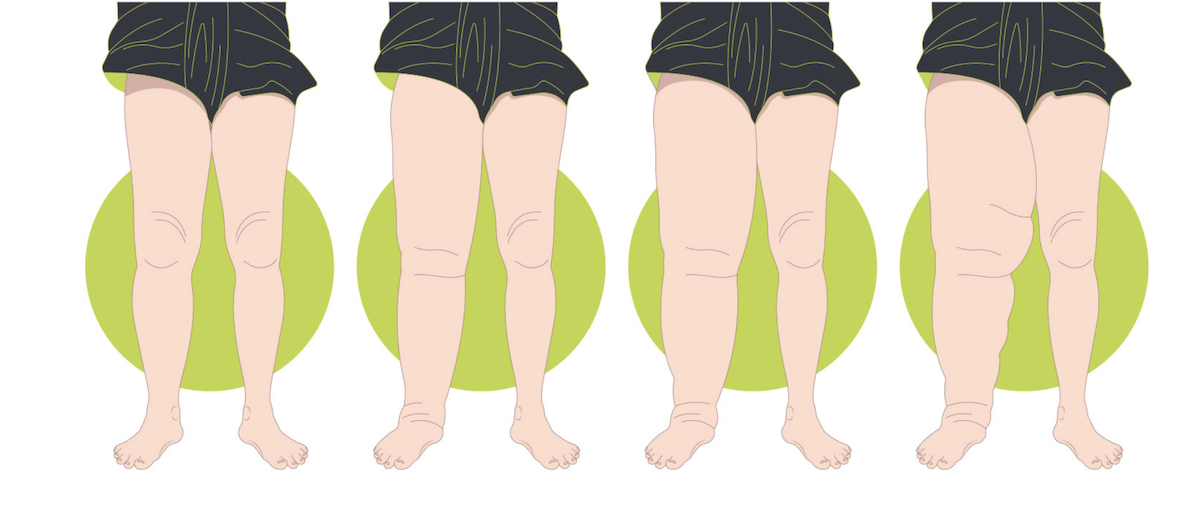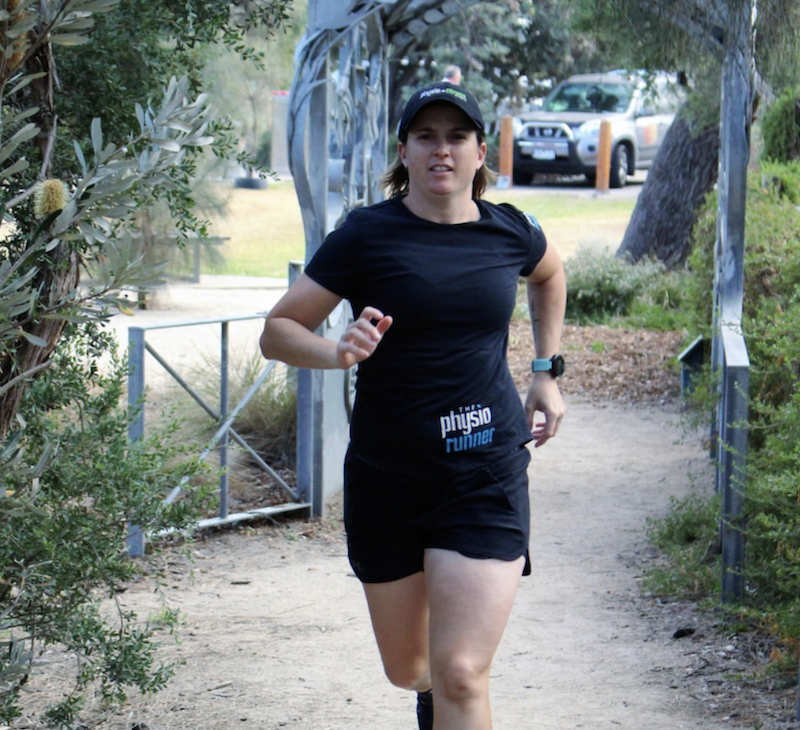What is Lipoedema?
Everything you need to know about Lipoedema. Explained by a physiotherapist and myotherapist.
Lipoedema, also spelled as lipedema, is a chronic condition characterised by the abnormal accumulation of fat cells, primarily in the legs, hips, and buttocks. In some cases, it can also affect the arms.
This condition is often symmetrical, meaning it affects both sides of the body equally. Lipoedema is more common in women affecting around 11% for the female population.
Lipoedema symptoms
One of the hallmark symptoms of lipoedema is the disproportional enlargement of the lower body, with the affected areas appearing disproportionately larger compared to the upper body.
Individuals with lipoedema often have a relatively “normal” upper body size while their legs, hips, and buttocks become progressively larger.
Lipoedema can cause significant discomfort, pain, and swelling in the legs, and the increased weight of the affected limbs can lead to difficulty in walking and mobility issues.


What is the main cause of lipoedema?
While the exact cause of lipoedema remains unknown, several factors are believed to contribute to its development.
Changes in female hormones, such as those occurring during puberty, pregnancy, and menopause, are thought to play a role in triggering or worsening the condition.
Additionally, trauma or injury can sometimes initiate lipoedema in affected individuals. There is also a genetic component, as individuals with a family history of lipoedema have a greater risk of developing the condition.
Importantly, lipoedema is not linked to weight; it can affect people who are underweight as well as those who are overweight.
Despite ongoing research, the precise interplay of these factors and the underlying mechanisms of lipoedema continue to be areas of investigation in the medical field.

How can I tell if I have lipoedema?
If you are concerned about whether you might have lipoedema, it’s important to be aware of the symptoms associated with the condition.
Common signs of lipoedema include the enlargement of legs (and sometimes arms) without a corresponding enlargement of feet and hands. Individuals with lipoedema often experience pain and discomfort in the affected areas, and these areas may bruise easily.
Dimpling of the skin, a lumpy texture of the tissue, and worsening swelling in the evening, after physical activity, or in hot weather are also typical symptoms. Additionally, varicose veins are sometimes associated with lipoedema.
How is lipoedema diagnosed?
Diagnosing lipoedema involves recognising symptoms such as limb enlargement, pain, bruising, and swelling, and consulting a healthcare professional. During the diagnosis, the healthcare provider conducts a physical examination, reviews the patient’s medical history, and rules out other conditions with similar symptoms.
Unlike some illnesses, there are no standardised blood tests or imaging procedures specific to lipoedema diagnosis.
Can you prevent lipoedema?
Unfortunately, there is no way to prevent lipedema. While the condition itself cannot be prevented, appropriate treatment and lifestyle modifications can help prevent its worsening and manage the associated symptoms effectively.
Early diagnosis and intervention play a crucial role in managing lipoedema and improving the quality of life for affected individuals.
What are Lipoedema treatment options?
Changes to diet: Adopting a healthy diet and ensuring an adequate intake of fluids can help manage lipoedema. While weight loss may not significantly reduce the affected areas, a balanced diet can support overall health.
Compression: Wearing compression garments, such as compression stockings or sleeves, can help reduce swelling and provide support to the affected limbs. Properly fitted compression garments can improve circulation and alleviate discomfort.
Low impact exercise: Engaging in low impact exercises such as swimming, yoga, and walking can improve mobility, increase circulation, and promote overall cardiovascular health. These activities are gentle on the joints and can be beneficial for individuals with lipoedema.
Massage: Therapeutic massage techniques, such as manual lymphatic drainage, can help move fluids within the lymphatic system, reducing swelling and improving mobility. Skilled massage therapy can enhance the effectiveness of other treatments.
Liposuction surgery: In some cases, liposuction surgery, specifically a specialized form called tumescent liposuction, may be considered. This surgical procedure involves the removal of excess fat deposits from the affected areas. Liposuction can provide significant relief from the symptoms of lipoedema and improve the shape and mobility of the affected limbs. It’s important to consult with a qualified and experienced surgeon to discuss the risks, benefits, and suitability of this option based on individual circumstances.
It’s crucial for individuals with lipoedema to work closely with healthcare professionals, such as dermatologists, vascular surgeons, or lymphatic specialists, to develop a personalized treatment plan tailored to their specific needs and symptoms.
Each person’s condition can vary, so a comprehensive approach considering lifestyle modifications, conservative therapies, and, if appropriate, surgical intervention can significantly improve the quality of life for those affected by lipoedema.
SOZO machine: A sozo machine uses biospectrometry to assess even the smallest changes in your fluid levels, so we can best manage your condition.
It sends an electrical pulse through the body, measuring fluid levels and other medical measurements. This means we can keep track of fluid levels, particularly in lymphoedema patients. It can also be used pre and post cancer treatments to test if anything has changed within a body.
Lymphoedema is when the lymphatic system becomes dysfunctional causing swelling or edema that won’t go away. Here at Physio and Fitness Clinic, we can assist you. Make an appointment with a physio today.
